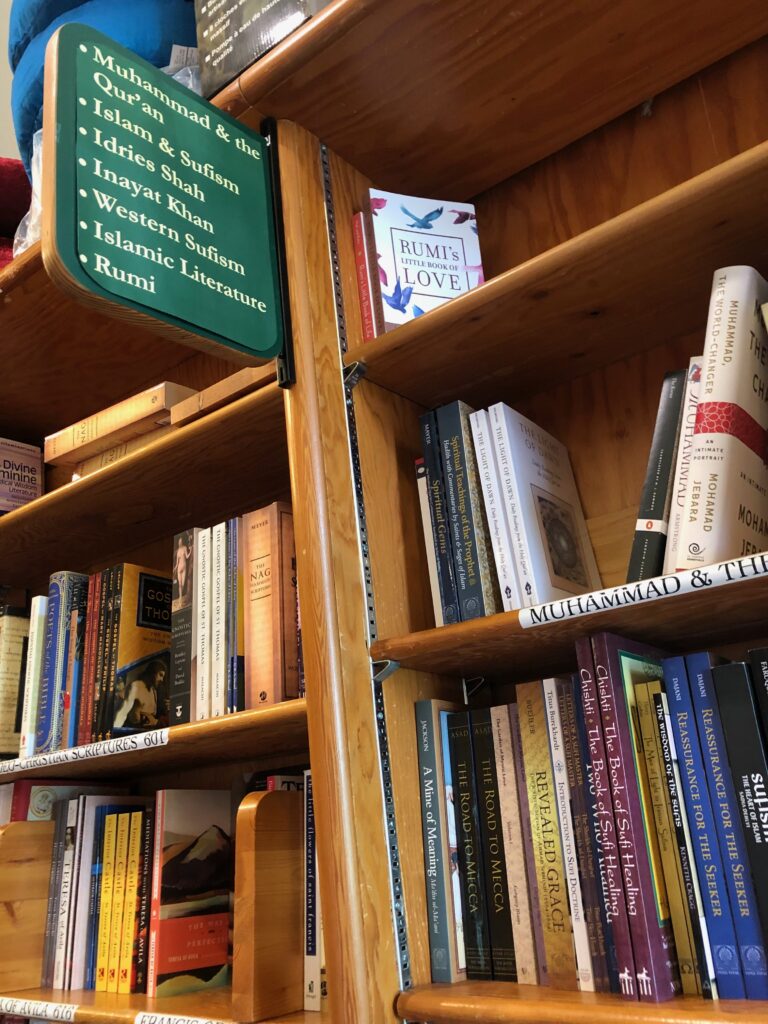By Dominique Hertzer
The journey into the Yijing, often referred to as the Book of Changes, is an exploration of potent symbols and philosophical insights that have guided decision-making and self-understanding for over 3000 years. I remain invigorated by a pertinent and foundational question about divination: How do we come to know what we cannot know?
Divination and Philosophy
For those unfamiliar with this classic text, the Yijing is not merely a divination manual, but a comprehensive cosmological and philosophical framework deeply rooted in the principles of polarity: yin and yang. It serves multiple purposes, from providing insight through its 64 hexagrams to offering wisdom that has shaped various aspects of Chinese philosophy and medicine. Its teachings suggest that by recognizing and understanding the cosmic patterns of change, individuals can influence their own paths in life, establishing their fates rather than being controlled by them.
The principle of “timeliness” is particularly vital here. It signifies the understanding of when to act and when to hold back, aligning one’s actions with the natural rhythms of the universe. In this context, the concept of ji (幾), or “incipience,” becomes crucial. It encourages practitioners to recognize the smallest movements or shifts in their current circumstances that portend larger changes. Hence, the Yijing teaches that awareness of these subtle beginnings can be essential for failure or success, as it helps one navigate the constant changes of life.
Key Components of the Yijing
The Yijing operates on a systematic combinatorial basis, meaning it provides a structured approach to understanding the relationships between symbols (the hexagrams) and the accompanying text within a defined framework. This structure is built upon three significant components:
- Coincidence: When you cast your fortune or pose a question, the hexagram drawn represents a specific moment resonating with cosmic patterns. This “coincidence” is far from random; it is a meaningful occurrence that reflects a deep interplay between your current state and the universal energies at work. Each hexagram serves as a snapshot of the context at that moment, acting as a bridge between the individual and the cosmos.
- Systematic Basis: The text and symbols encompassed within each hexagram offer a wealth of interpretative meaning. Each hexagram acts as a lens through which situations can be understood.
- Interpretation: This is where divinatory knowledge manifests. It is a moment of nuanced understanding where the practitioner engages with the text and symbols to derive meaning relevant to their particular inquiry.

The Nature of Divination
At its core, divination via the Yijing is an endeavor that transcends ordinary knowledge. It seeks to unlock insights into what is typically beyond our grasp, often leaning towards the future’s unpredictability. Much of this exploration steers clear of rational discourses; instead, it delves into realms that might be characterized as intuitive or even irrational.
Peter Struck, in his book Divination and Human Nature,1 argues that intuitive cognition is integral to understanding the knowledge gleaned during divinatory practices. He posits that cognitive processes are not strictly dichotomous (rational versus irrational), but instead are interwoven threads of conscious and unconscious elements working together. How does this idea apply to the Yijing?
Resonance and Intuition
A vital aspect of unlocking divinatory knowledge in the Yijing lies in the concept of “resonance”. In Chinese philosophy, resonance is not merely a metaphor; it signifies the interconnectedness between all entities and the cosmos. The Chinese term ganying 感應 itself combines the character gan 感 in the sense “a stimulus moving the heart” with the idea of “agreement” or “response” (ying 應). This means that resonance is about being responsive to stimuli and recognizing inherent connections in and with our environment.
With this lens, we can view the two hexagrams, Xian 咸, representing resonance, and Guan (觀), denoting contemplation, as pivotal in understanding the intuitive insights captured within the Yijing.
Hexagram 31 Xian 咸: Influence and Resonance
In principle, two forms of resonance can be distinguished: resonance by oppositeness and resonance by similarity – they complement each other. It is essential to notice here, that the concept of resonance is as important in classical Chinese thought as the concept of cause and effect is in the Occident. In case of resonance by similarity things and beings which belong to the same category of qi 氣 (life force) resonate with each other. In case of resonance by oppositeness, as we encounter it in the hexagram 31 Xian 咸, the opposites attract each other and may create something new – much like the interplay between yin and yang. Since the correlations between man and cosmos are due to resonances, the potential of knowing the future ultimately also arises from the phenomenon of resonance. Resonance is the background to be reflected upon against which cognition takes place, especially intuition.
Hexagram 20 Guan 觀: Contemplation
Guan 觀,the second aspect denoting intuitive insight, encompasses a broader observation, extending beyond mere external events into the realm of introspection. The character itself embodies comprehensive viewing – not just seeing, but understanding in nuanced layers. It serves as a reminder that contemplation is as much about inner reflection as it is about external observation.
Therefore, contemplating (guan) the inner landscape and the outer world at the same time allows one to see beyond the immediate, it directs the view to the essence of things themselves – in the sense of a comprehensive contemplation, that leads to intuitive insight.

Comprehensive Contemplation of Resonances
To fully grasp the divinatory insights offered by the Yijing, we must engage in what I would term “comprehensive contemplation of resonances.”2 Contemplation involves a thorough examination of both external, always changing circumstances and internal states of being, which are both an expression of resonances. As we have seen the concept of coincidence aligns with the principle of resonance, where events, feelings, or intentions respond to one another. When we draw a particular hexagram, it resonates not only with our inquiry but also with broader cosmic forces.
Regarding the structure of the Yijing, the symbols serve as catalysts for deeper, intuitive insights, while the hexagram and line statements provide explicit guidance and structured interpretations. They provoke thought and encourage reflection, allowing practitioners to uncover layers of meaning relevant to their circumstances.
Therefore, divinatory knowledge in the Yijing arises from the interplay between the intuitive understanding of symbols and the rational apprehension of the texts. The symbolic framework invites users to engage with their personal situations and emotions, leading to a realization that transcends mere rational thinking. Here, intuition is not considered irrational; rather, it is an essential component of a holistic understanding that integrates both emotional and cognitive dimensions of knowledge.
This synergy of intuition and rational thinking reveals a nuanced perspective that is emblematic of the Yijing. In traditional Western thought, we often view intuition and rationality as opposing forces, each vying for dominance in our decision-making processes. However, in the framework of the Yijing, these elements are not mutually exclusive. They are rather an expression of the polarity of yin and yang, in the sense that these opposites represent an indispensable complement to each other.
#
Dr. Dominique Hertzer’s current research project on the contemporary application of the Yijing (Book of Changes) in Chinese medicine integrates her clinical and academic backgrounds. She completed a PhD at LMU Munich focused on the Mawangdui Yijing, a divination text from 162 BC, while also studying Chinese Medicine in Munich and at Tianjin TCM University, ultimately qualifying as a Heilpraktiker.
This clinical experience led her to pursue a second PhD in Theory Formation in Medicine at the University of Witten-Herdecke, where she examined the philosophical influences on mind-body relations in medicine across cultures. Her main research focus is on the significance of philosophy in and for medicine.
____
Image 1: Joachim Bouvet sent the sixty-four hexagrams from China to Leibniz, 1701(https://de.wikipedia.org/wiki/I_Ging#/media/Datei:Diagram_of_I_Ching_hexagrams_owned_by_Gottfried_Wilhelm_Leibniz,_1701.jpg)
Image 2: The eight trigrams (bagua) and the first sentence from the Yijing (By author)
____
- Struck, Peter T. Divination and Human Nature: A Cognitive History of Intuition in Classical Antiquity. First paperback printing, Princeton University Press, 2018. ↩︎
- This idea is discussed in detail in my forthcoming article: Dominique Hertzer: “How can we get to know what we cannot know? The Concepts of Intuitive Cognition in the Yijing”, in: Contemporary Interpretations and Readings of the Yijing: The Changes in Our Times, edited by Geir Sigurðsson and Tze-ki Hon. Springer, Singapore 2025. ↩︎
CAS-E blogs may be reprinted with the following acknowledgment: “This article was published by CAS-E on November 25th, 2024.”
The views and opinions expressed in blog posts and comments made in response to the blog posts are those of the author(s) and do not necessarily reflect the views and opinions of CAS-E, its founders, its staff, or any agent or institution affiliated with it, nor those of the institution(s) with which the author is affiliated.








